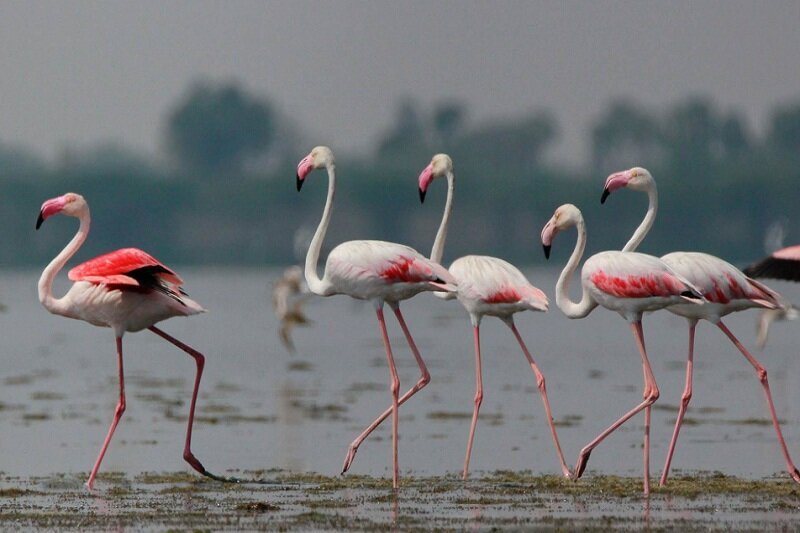Flamingos flock to Zarivar Wetland in western Iran

TEHRAN – A total of 112 flamingos have been spotted at Zarivar Wetland in the western city of Marivan.
With the gradual decrease in air temperature in the Siberian regions and the provision of favorable habitat conditions in the country, the lake is considered a suitable refuge for migratory birds, IRNA reported.
These migratory birds include swans, flamingos, gray and white-fronted geese, ruddy shelducks, pintails, and different species of ducks, including oak ducks.
Located at the foot of the Zagros mountains, Zarivar is a freshwater wetland hosting over 74 bird species, which is designated as a Ramsar Site.
The Ramsar Convention uses a broad definition of wetlands. This includes all lakes and rivers, underground aquifers, swamps and marshes, wet grasslands, peatlands, oases, estuaries, deltas, tidal flats, mangroves, and other coastal areas, coral reefs, and all human-made sites such as fish ponds, rice paddies, reservoirs, and salt pans.
The Convention on Wetlands is an intergovernmental treaty that provides the framework for the conservation and wise use of wetlands and their resources.
It was adopted in the Iranian city of Ramsar in 1971 and came into force in 1975.
The site provides a suitable breeding and resting place for birds and other wetland animals, and due to the relatively extensive reed beds, it is an important overwintering site for northern migratory birds.
Every year, from early September to late February, Iran hosts rare species of migratory birds heading from the north to the southern countries due to reduced seasonal temperatures and food availability.
Among the various groups of migratory birds wintering in Iran, the largest population belongs to the group of geese, swans, and ducks and the smallest population of seven are the long-tailed ducks or oldsquaw.
The provinces of Mazandaran and Golestan are the first provinces with the highest number of migratory birds for having sufficient resources, as the movement of migratory birds is closely linked to the seasonal availability of resources.
In Iran, 141 wetlands with ecological value with an area of over 3 million hectares have been identified, of which 25 wetlands are designated as wetlands of international importance (registered in the Ramsar Convention) covering more than 1.4 million hectares and four sites are biosphere reserves.
MG
